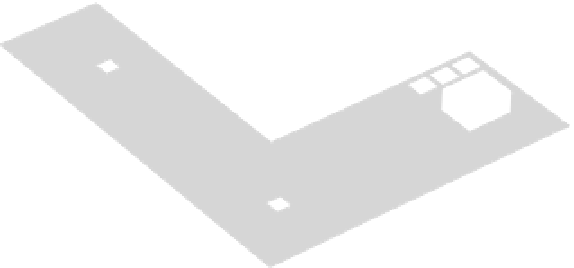Agriculture Reference
In-Depth Information
or ladder; through a door or window; and in the form of visual access through a
window or façade opening (
Figure 4.13
). The accessibility will dictate the use of the
roof by the general public and/or building occupants. Currently, many extensive
living roofs are constructed on top of lat roofs, at least one storey above ground
level, and are inaccessible to the public. Recently, architectural trends like the sloped
roof at Hypar Pavilion Lincoln Centre, New York, have endorsed the design of exten-
sive living roofs that are accessible from public spaces. One of the irst examples
built was the university library in Delft, the Netherlands (International Ecological
Engineering Society 2007). This roof is used as a sloped lawn for outdoor reading.
In most cases, access to extensive living roofs determines their usage possibilities
and inluences other functions. In addition to determining program and potential
social functions, planning for a publicly accessible extensive living roof requires a
balance of the following considerations: the type of plants used (e.g., “lawn”, dec-
orative plants for visual interest), hardscape for social gatherings, and potentially a
steeper slope, which facilitates visibility from the street but also accelerates drain-
age through the substrate. If accessible to the public, frequent foot trafic might
cause damage to the plants, as the thinness of the growing medium provides little
loading buffer and the roots and plants are more likely to get crushed.
For sloped grass “carpet”-like designs, groundcovers (i.e., wear-and-tear
resistant vegetation) should be used, as they are hardier than grasses and have
Ideal roof
Pervious edge
Extensive
living roof
Maintenance
access
Maintenance
path with pervious
edging (e.g., gravel)
Patio
Protrusions with
pervious edge
(e.g., air conditioner)
Roof parapet
Railing
Extensive
green roof
Pervious
edge
Perforations with
pervious edge
(e.g., drainage
point)

































Search WWH ::

Custom Search